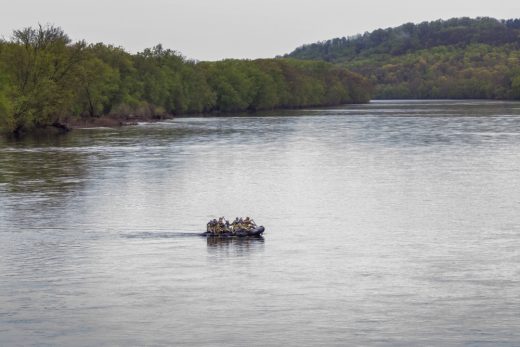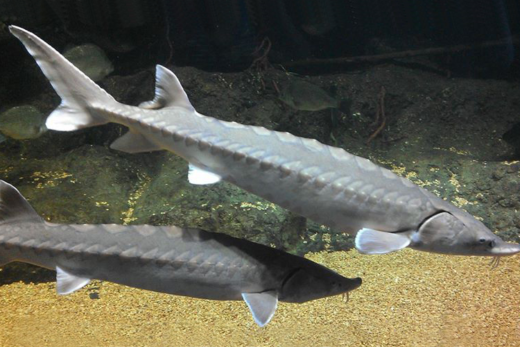Activists and volunteers, some garbed as sturgeon, hosted the “Last Baby Shower for the Delaware River Atlantic Sturgeon” recently.
The purpose was twofold: to raise public awareness about the imminent threat of extinction facing the Atlantic Sturgeon population in the Delaware River, and to garner signatures for a message urging immediate, targeted protective action by the National Marine Fisheries Service (NMFS), U.S. Environmental Protection Agency (EPA), and Delaware River Basin Commission (DRBC).
The initiative was led by the Delaware Riverkeeper Network, Waterspirit, and Saddler’s Woods Conservation Association in a bid to draw attention to the endangered, genetically unique population of Atlantic Sturgeon in the Delaware River.
At one time, the Delaware River was home to the Atlantic Sturgeon, which was estimated to be at least 180,000 spawning females. However, the large fish became known for its caviar and were harvested by the millions of pounds in the late 1800s. Salt water intrusion, dredging, overfishing, water pollution, damage to the river habitat by silt from the coal industry, and boat strikes have led to the population to drastically shrink.
Atlantic sturgeon can achieve impressive sizes, growing up to roughly 16 feet in length and tipping the scales at as much as 800 pounds. These creatures are noted for their slow growth rate and late maturity. In fact, some Atlantic sturgeon have been documented to live as long as 60 years, and reach lengths of up to 14 feet.
Activists, bearing symbolic bloody ship propellers and informative signs, urged passersby on the the lawns of Independence Hall and the streets of Philadelphia to sign “Thank You” cards, mockingly thanking the targeted agencies for their “deadly gifts of extinction.”
These “gifts” include ship strikes, habitat destruction, pollution, and failure to maintain adequate oxygen levels in the water — crucial for the sturgeon’s survival.
The plight of the Delaware River Atlantic Sturgeon population is severe, organizers said.
Due to what organizers see as negligence on the part of the government, approximately 99.5 precent of the original sturgeon population has been decimated, leaving only 250 spawning adults to propagate the species.

Credit: Mark C. Olsen/New Jersey National Guard
“Time is running out for the Atlantic Sturgeon of the Delaware River,” said Maya van Rossum, the Delaware Riverkeeper and leader of the Delaware Riverkeeper Network. “If our government agencies do not step up and put in place critical protections, while at the same time saying ‘no’ to fossil fuel, dredging and port projects that will inflict devastating harm, then the Delaware River’s Atlantic Sturgeon population could be lost from this earth in our lifetime. Once they are lost we can never get them back. That will be a tragedy and responsibility inflicted because of the conscious choice of the Delaware River Basin Commission, National Marine Fisheries Service and USEPA who had a chance to save the sturgeon but chose not to. And that is unacceptable.”
The campaign is calling for authorities to adopt protective pollution standards, recognize the Delaware River Atlantic Sturgeon as a distinct population requiring enhanced protection under the Endangered Species Act, and reject projects that negatively impact habitat and water quality, such as those related to fossil fuels, LNG, ports, and dredging.
Rachel Dawn Davis, public policy and justice organizer at Waterspirit, emphasized the urgency of the situation.
Extinction of the Delaware Atlantic sturgeon is a key indicator the time for government action is overdue. With our young people and young sturgeons crying out for a future in which they can breathe, it is imperative that real action is taken to reverse the fate of the Delaware Atlantic sturgeon and its related ecosystem,” she said.
Janet Goehner-Jacobs, executive director of New Jersey-based Saddler’s Woods Conservation Association, echoed Davis’s sentiments: “If we are to save the Delaware’s genetically unique sturgeon, regulatory agencies must act now.”
As part of the campaign, the organizers are also urging the general public to sign the virtual “Thank You” cards on their website. The signatures and cards will be delivered to the targeted regulatory agencies in the coming weeks as part of additional petitions and calls for government action.









